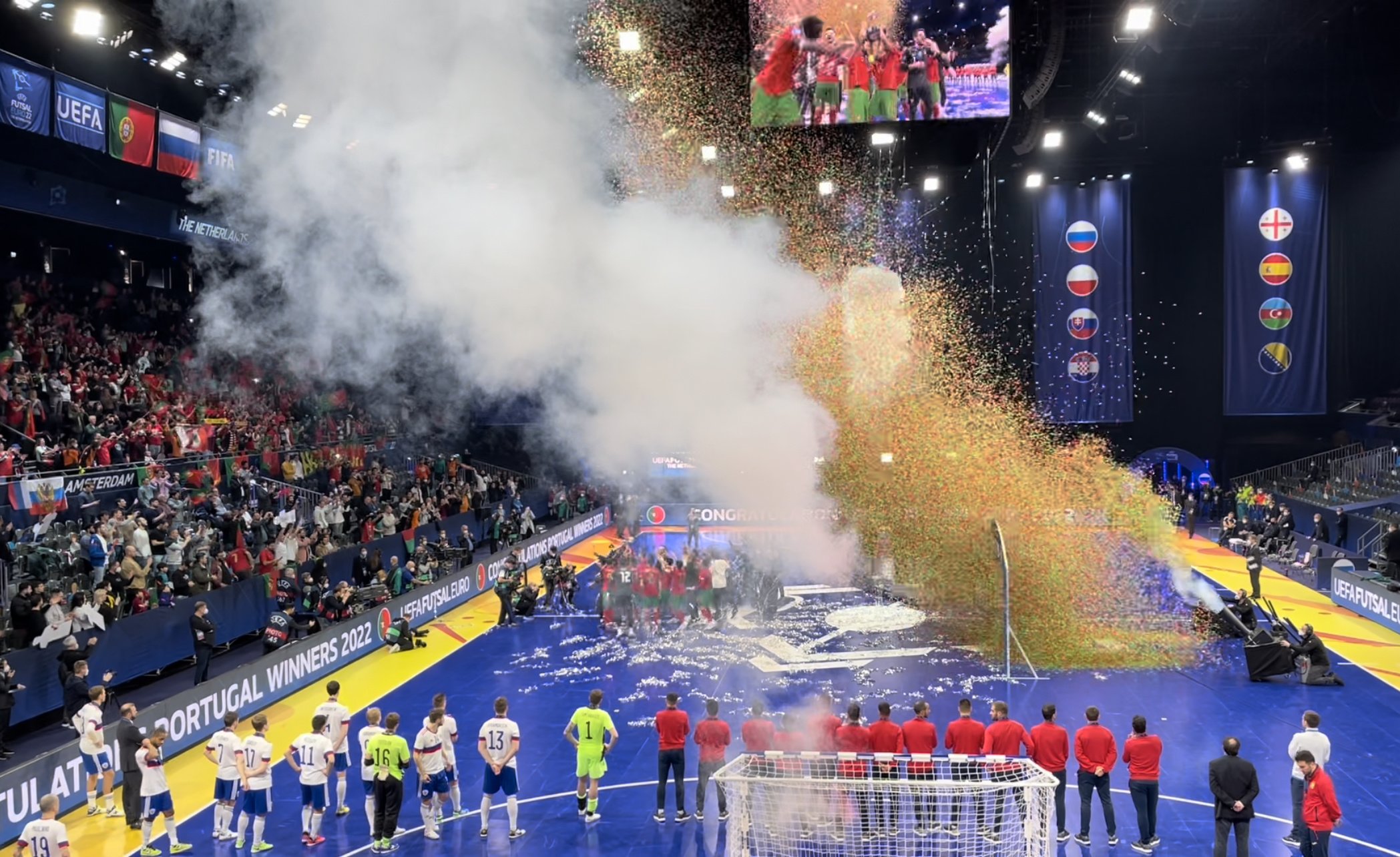Why futsal? The sport that came in from the rain
HISTORY HAS a habit of repeating itself. Nearly a century ago, in the immediate aftermath of the Wall Street crash, three things rang true: the global economy teetered on the brink of meltdown; a limited supply of freely available outdoor pitches left football-crazy kids kicking their heels in frustration; and persistent rainfall all too often stopped play. Especially in Montevideo, the capital of Uruguay, newly crowned winners of the first-ever World Cup in 1930.
Necessity gave birth to invention. Professor Juan Carlos Ceriani, an Argentinian PE guru, invented a hybrid sport – one he hoped would “civilise” 11 a side football – suited to the economic, social, cultural and meteorological climate as tens of thousands of sport-crazy European immigrants added spice to a melting pot of citizens desperate to play.
Futebol de salão (indoor football) was born. In the YMCA hall on Colonia 1065, at the corner of Rio Negro in the heart of the city centre, to be precise.
So this is usually answer number one whenever I'm asked the question: why futsal?
First up, yes, it's an indoor sport. Not exclusively, of course. It's also a game of the streets, courts and cages. This adaptability is another big attraction. But at the elite professional level (apart from notable exceptions such as the world-record 58,483 fans packed into the Mané Garrincha Stadium in Brasília in 2014 to watch Falcao’s Brazil crush Argentina 4-1 on a court erected in the middle of the 11 a side pitch) it's grown up in South America as an exclusively indoor sport.
Keep kids active
But whether indoor or out, it's played on a hard surface. Five a side. No offside. Lines not walls. With potently restrictive, creativity-inducing rules – and a smaller, heavy, low-bounce ball – sucking the down-time and flabby decision-making process out of the game whether played with a stopping clock (at elite level) or not, as is common in youth matches in my experience.
Futsal, as it's been known since the 1970s onwards, does not get rained off. Prof Ceriani saw this. And in a British context, youth footballers living in rainy Manchester or Motherwell can benefit in the 2020s as much as the children of Montevideo did in the 1930s.
By coming indoors to play. Many Charter Standard youth football leagues in England have turned to futsal to keep kids active during winter in recent pre-Covid years. In 2017, an estimated 10,000 youngsters experimented with futsal that season.
But clearly futsal is not just for Christmas. So why else play it? Hopefully I've answered this and much more in Futsal: The Story of an Indoor Football Revolution. But given this is the first blog on futsalstreetspot.com – a site devoted to the socio-cultural impact and potential of the Fifa-sanctioned five-a-side sport, 11-a-side “big” football and every street and court and informal action in between – it pays to emphasise the “why”.
Thinking player’s game
Of course futsal looks like football. Yet it feels more like basketball. It's a rapid counter-attacking game with an urban, maverick intensity that envelops every player at all times. There is simply no hiding space.
“Of course futsal looks like football. Yet it feels like basketball. It’s a rapid counter-attacking game”
The football comparison is inevitable in Britain. That's fine by me. I love both sports. But for different reasons. Football defines my culture, belonging and history over five decades. I love playing it. Just not quite as much as I do futsal. Why? It reminds me of the streets, particularly the informal, breathless child-led contests that formed a backdrop to my 1970s and 80s upbringing in Liverpool.
For futsal novices, it pays to imagine football but with all of the best bits magnified and multiplied. More goals, shots, saves, quick-passing combinations, counter-attacks and brutally technical 1v1 encounters. If you then volley into row Z all of football’s worst excesses – gratuitous time-wasting, offside drama, goalless draws and billionaire-led super league breakaways – you're left with something resembling futsal. More bang for your buck, whether a young player, elite coach or spectator.
It's a thinking player's game. The “laboratory of improvisation” in Brazil, where it's played by more people than play football.
All of which makes the compelling case for answering the “why futsal?” question next time with a pithy rejoinder: “Why not?”
Have something to share? Add your comment below.













MIGUEL RODRIGO is ready for his last dance with Thailand. The globe-trotting Spanish tactician reveals his futsal inspirations plus hopes and predictions for the World Cup in Uzbekistan